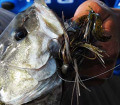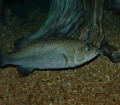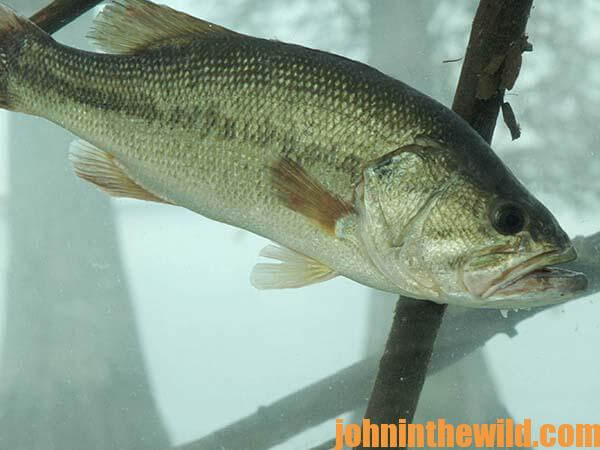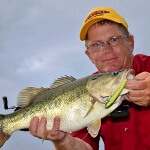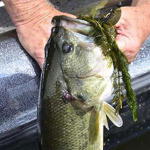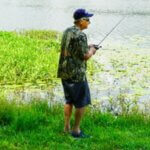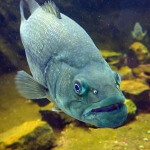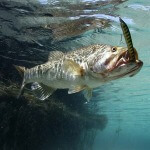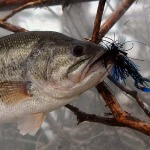John’s Note: Captain Phillip Criss of Scottsboro, Alabama, has been a more than two decade fishing buddy of mine for both bass and crappie – first at Miller’s Ferry and now at Lake Guntersville (www.guntersvilleal.org) on the Tennessee River in north Alabama. Anglers across the South know of Criss’s bass fishing expertise, and since he retired from his day job to Guntersville to guide and fish, I’ve wanted to go fishing with him. In mid-July, I finally had the chance.
 “I fish a Spro Little John deep-diving crankbait (http://http://www.spro.com) that dives down to 16 to 20 feet deep, and I like the nasty shad color,” Phillip Criss reports.
“I fish a Spro Little John deep-diving crankbait (http://http://www.spro.com) that dives down to 16 to 20 feet deep, and I like the nasty shad color,” Phillip Criss reports.
The other color he fishes with this crankbait is Cell Mate. When Criss is fishing the Little John, he casts it as far as he can, cranks the bait down hard and tries to dig the lip of the crankbait into the bottom.
“When the bass take this deep diving crankbait, you’ll feel a vicious strike,” Criss explains. “If I’m fishing underwater structure like logs and limbs, when the Little John hits the cover, I stop it, let it float up above the cover and then reel it slowly over the top of the cover.”
While Criss was explaining to me how to fish this deep-diving crankbait, I still was fishing the Zoom Magnum Trick Worm (www.zoombait.com) when I felt the worm crawl into a brush pile and hang up. I shook the bait, jerked it, pulled on the line and finally got the shaky head out of the brush. Immediately the worm fell, and a 5 pound largemouth attacked. We landed the bass and put it in the live well.
I asked Criss, “How do you decide whether to fish a crankbait or the shaky head worm in the summer?” “This place we’re fishing has a ditch running through it,” Criss said. “On top of the ditch, the water depth is 8 feet deep. When you come over the lip of the break, the bottom of the ditch is 12-feet deep. I like to run the crankbait through the bottom of the ditch. If I don’t catch a bass that way, I throw the crankbait on top of the ditch in the 8 foot water. I’ll pull it over the lip of the break and down to the 12 foot water. Then, I let it dig the side of the ditch, as I reel it up the other side of the ditch into the 8 foot water.”
One of the areas we fished was an underwater spring that was 14 feet deep. We were fishing the ditch where the water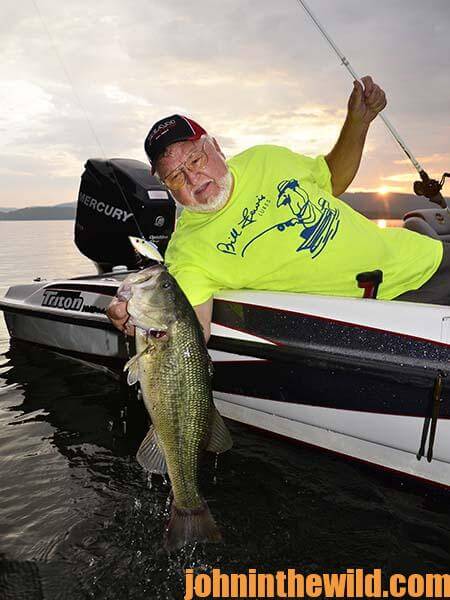 from the spring ran down and created a small creek. I asked Criss, “What is the biggest bass you’ve caught at Guntersville?” He answered, “My best limit of five bass in a tournament weighed 38.68 pounds. All those fish were caught on a buzzbait during October. From mid-summer until October is prime time bass fishing at Lake Guntersville. I like bright sunny days – the type of days that cause the shad to school up on some of the places I fish. When the shad start schooling, that’s when the big bass will come up on top to eat the shad. It’s worth a trip to Guntersville just to watch what happens.”
from the spring ran down and created a small creek. I asked Criss, “What is the biggest bass you’ve caught at Guntersville?” He answered, “My best limit of five bass in a tournament weighed 38.68 pounds. All those fish were caught on a buzzbait during October. From mid-summer until October is prime time bass fishing at Lake Guntersville. I like bright sunny days – the type of days that cause the shad to school up on some of the places I fish. When the shad start schooling, that’s when the big bass will come up on top to eat the shad. It’s worth a trip to Guntersville just to watch what happens.”
The first afternoon I fished with Criss we were in and out of little rainstorms, but the bass came up schooling.
I couldn’t believe the size of some of the schooling bass I saw chasing and eating shad. I spotted one bass that had to weigh from 7 to 10 pounds and had a 10- to 12-inch shad folded in half in its mouth. That big bass was trying to close its mouth and eat that whole big shad. When we released the first 6-pounder I had caught, that fish spit out a shad that was 10-inches long. Most of the time, when I’ve seen bass schooling on shad, the bass will weigh from 1/2- to maybe 3 to 5 pounds. But on Lake Guntersville, when those really big bass come up in schools, you can see bass with heads that look like a #1 washtub.
“One of the better lures to use here at Guntersville when big bass start schooling on top is the Zara Spook (http://www.heddonlures.com),” Criss explains. “The Spook is a big top-water lure that you can work from side to side and often get a big bass to bite. When the bass go down and aren’t chasing bait on the surface, I throw my deep diving crankbait, or my Zoom Magnum Trick Worm.”
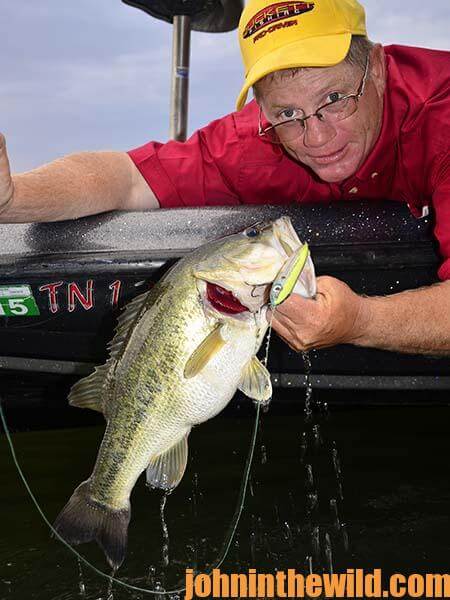 The other bait that Criss recommends is a swimbait. “I believe the biggest swimbait you can cast often will be the most-productive swimbait you can fish. Big bass won’t attack small shad. But when the big shad move in, this is when the big bass really put on a show. The hickory shad seem to come and feed on the smaller shad that you see on the surface. Then, the big bass move in and attack the hickory shad.”
The other bait that Criss recommends is a swimbait. “I believe the biggest swimbait you can cast often will be the most-productive swimbait you can fish. Big bass won’t attack small shad. But when the big shad move in, this is when the big bass really put on a show. The hickory shad seem to come and feed on the smaller shad that you see on the surface. Then, the big bass move in and attack the hickory shad.”
A relatively-new swimbait that I plan to investigate more fully is the Bull Shad, a 9-inch swimbait that has a hefty price tag of $79.99 (www.bullshad.com). From the reports I’ve gathered on the lake, many bass fishermen say that the price is justified by the number of big bass the Bull Shad swimbait is producing, but I know nothing but hearsay evidence. Criss told me that most stores around Guntersville can hardly keep it in stock. I hope to report more details on this giant swimbait, when I’ve had a chance to fish it.
To contact Captain Phillip Criss about fishing Lake Guntersville, call him at 205-461-5549, or email him at pdcriss@hotmail.com.
To learn more about bass fishing, get John E. Phillips’ Kindle eBooks and print books, “How to Bass Fish Like a Pro,” “How to Win a Bass Tournament,” “Catch the Most and Biggest Bass in Any Lake: 18 Pro Fishermen’s Best Tactics, “Hot Weather Bass Tactics” and “How to Become A Tournament Bass Fisherman.” Click here to get these books.
About the Author
John Phillips, winner of the 2012 Homer Circle Fishing Award for outstanding fishing writer by the American Sportfishing Association (ASA) and the Professional Outdoor Media Association (POMA), the 2008 Crossbow Communicator of the year and the 2007 Legendary Communicator chosen for induction into the National Fresh Water Hall of Fame, is a freelance writer (over 6,000 magazine articles for about 100 magazines and several thousand newspaper columns published), magazine editor, photographer for print media as well as industry catalogues (over 25,000 photos published), lecturer, outdoor consultant, marketing consultant, book author and daily internet content provider with an overview of the outdoors.

